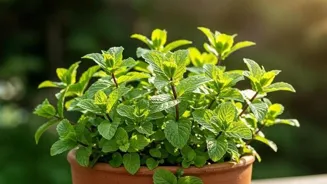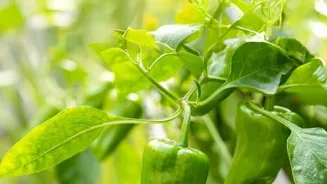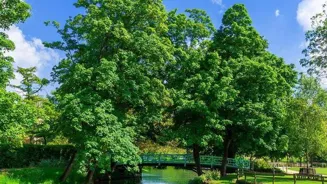Unlock the Secrets to Growing Exotic Indian Plants! Dive into 10 expert tips to transform your garden oasis
Namaste, garden lovers! Are you tired of seeing the same old roses and daisies in every garden?
Do you yearn for a touch of the exotic, a splash of vibrant Indian colours and fragrances right in your own backyard? Well, you've come to the right place!
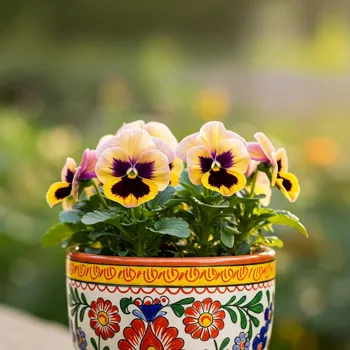
India, with its diverse climate and rich biodiversity, offers a treasure trove of stunning plants just waiting to be discovered. Growing these beauties can seem a bit intimidating, but don't worry, we've compiled ten easy-peasy tips to help you create your very own slice of Indian paradise.
So, grab your gardening gloves, and let's get started!
Know Your Climate and Plant Match
The first step to a successful Indian garden is understanding your local climate. Is it hot and humid like Mumbai, or cool and dry like Shimla? Indian plants come from various regions with different needs.
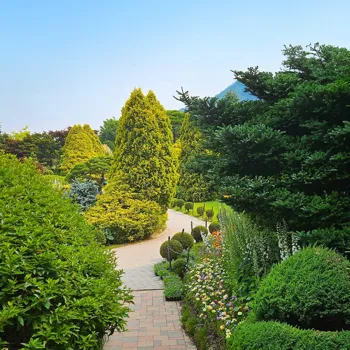
For example, if you live in a cooler area, opt for plants like Himalayan Blue Poppy (though challenging), Rhododendrons or Deodar Cedar. If you are in a hotter zone, go for Bougainvillea, Hibiscus or Mango trees. Do your research and choose plants that will thrive in your specific conditions.
Ignoring this basic step is the biggest mistake many new gardeners make; ensure the plant is a happy fit for where you reside. Also, consider the amount of sunlight your garden receives. Some plants love full sun, while others prefer shade. Check the plant's specifications before you buy it.
Soil is King (or Queen!)
Good soil is the foundation of any healthy garden. Most Indian plants prefer well-drained soil that is rich in organic matter. Before planting, amend your soil with compost, manure, or coco peat to improve its fertility and drainage. You can also add sand to heavy clay soil to improve drainage.
A slightly acidic to neutral soil pH is generally preferred by most Indian plants. Test your soil pH using a simple soil testing kit available at most garden stores to ensure it's the right level for growing Indian exotics.
Remember that the soil has to be healthy for the plants to feel happy and grow. Don't forget to water your plants frequently if the soil dries up. Ensure that you are using organic fertilizers so that they don't damage your plants.
Watering Wise
Watering seems easy, but it is very easy to overwater or underwater plants. Indian plants, depending on where they come from, can be very particular about their watering needs. Some, like succulents and cacti, are drought-tolerant and prefer infrequent watering.
Others, like flowering plants, require regular watering, especially during the growing season. The best way to know if your plant needs water is to check the soil moisture. Stick your finger about an inch into the soil. If it feels dry, it's time to water.
When you do water, water deeply so that the water reaches the roots. Avoid overwatering, as this can lead to root rot. Keep an eye on the leaves of your plants. If they are drooping or turning yellow, it could be a sign of over or underwatering. Pay close attention to your plants.
Sunlight and Shade Harmony
Sunlight is crucial for plant growth, but too much can damage some plants. Understand the sunlight needs of your plants. Some Indian plants, like sunflowers and marigolds, thrive in full sun (at least 6 hours of direct sunlight per day). Others, like ferns and snake plants, prefer partial shade.
Observe how the sunlight falls in your garden throughout the day and plan your planting accordingly. If you live in a very hot climate, provide some shade for your plants during the hottest part of the day; this can be done through shade cloths or carefully positioned trees.
If your plants are indoors make sure to place them near the balcony where it is exposed to sunlight. Without sunlight there is no life for plants
Fertilizing for Flourishing
Just like us, plants need nutrients to grow and thrive. Fertilizing is a vital part of plant care. Use a balanced fertilizer specifically formulated for flowering plants or vegetables. Follow the instructions on the fertilizer packaging carefully. Too much fertilizer can burn your plants.
Consider using organic fertilizers like compost tea, vermicompost, or bone meal. These are gentler on your plants and the environment. For flowering plants, use a fertilizer that is high in phosphorus to promote blooms.
For leafy plants, use a fertilizer that is high in nitrogen to promote foliage growth. Fertilizing can make a huge difference in the health and vitality of your plants. It is important to ensure the plants are taken care of and fertilized in the correct way.
This helps plants to stay away from diseases.
Pest and Disease Patrol
No garden is immune to pests and diseases but you can prevent damage. Regularly inspect your plants for signs of pests such as aphids, mealybugs, or spider mites, or for signs of disease like spots, wilting or powdery mildew.
Address any problems promptly because small problems can become big problems very quickly. Use organic pest control methods such as neem oil, insecticidal soap, or introducing beneficial insects like ladybugs.
For diseases, make sure there is good air circulation around your plants, avoid overwatering. You can use organic fungicides. Prevention is better than cure. Keep your garden clean and free of debris, as this can harbour pests and diseases.
Make sure the leaves are always kept dry with fresh and airy atmosphere.
Embrace Indian Flowers
What's an Indian garden without the glory of Indian flowers? The garden comes alive during the spring season. Plant fragrant jasmine ( mogra), vibrant marigolds (genda), sacred lotus (kamal), or the cheerful hibiscus (gurhal).
These flowers not only add beauty but also attract pollinators like bees and butterflies. Consider adding different colours to attract different butterflies. These flowers are easy to take care of. Arrange them in a circle or square form in your garden.
Ensure that your garden is aesthetically pleasing and beautiful to the eye.
Cultivate Aromatic Herbs
Indian cuisine is incomplete without its aromatic herbs, hence why should your garden be different? Grow tulsi (holy basil), mint (pudina), coriander (dhania), and curry leaves in pots or raised beds. These herbs are not only easy to grow but also add flavour to your cooking.
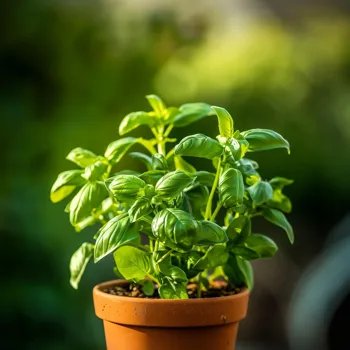
Plus, the fragrance will fill your garden. Tulsi is considered sacred in Hinduism and is believed to have medicinal properties, and is easy to grow in your garden. Pluck the dry stems from the plants on a regular basis.
Garden needs Indian trees for shade, shelter, and environment
Add Indian Trees A garden would be incomplete without trees. Mango (Mangifera indica, sacred fig (Ficus religiosa) or Neem(Azadirachta indica). Trees provide, shade, shelter and are good for the enviornment.
Make sure you have space when planting a tree, also check the tree is in line with the neighbours.
Mulching Magic: Mulching is one of the best things that you can do. It helps retain moisture, suppress weeds and regulate soil temperature. Use organic mulches such as straw, wood chips, or shredded leaves. Apply a layer of mulch around your plants, keeping it away from the stems. Mulching also helps to improve soil fertility as it decomposes. Mulching not only benefits your plants but also gives your garden a neat and tidy appearance. Make sure the mulch is kept dry.
With these ten tips, you're well on your way to creating a gorgeous Indian garden that is the envy of all in the neighbourhood. Happy gardening!



